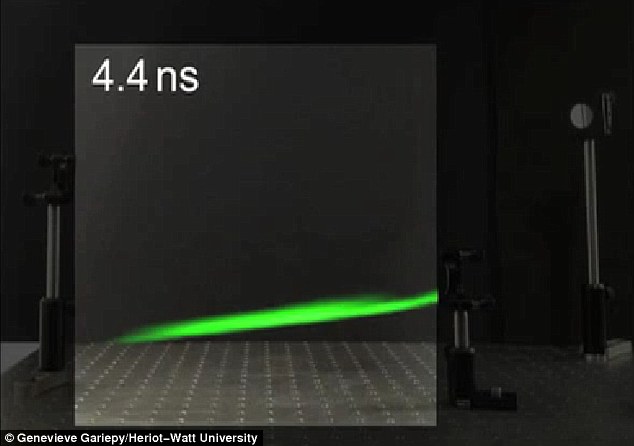The laser was first filmed

Researchers for the first time were able to photograph a laser reflected from a mirror on video.
It is extremely fascinating to watch a multicolored line of light passing by in any NF film, but in reality it’s not easy to observe a laser beam. In order to see it, the photons from the laser must fall on the retina of the eye, and because the laser is a coherent stream moving in one direction, this only happens when the laser beam hits something that reflects part of the world.
')
An insignificant number of photons is reflected from molecules located in the air, but this is not enough to see the beam. This can be corrected, letting in smoke, to give the laser more molecules from which it will be reflected, but this is not the effect as in films.
“The task was to create a video beam of a laser moving through clean air,” says Geneva Gariepi from Heriot-Watt University of Edinburgh. “We wanted to see the light without interacting with it, just as it flies past.”
To achieve this, the researchers built a highly sensitive enough to capture these single photons reflected from individual atoms. It is built from sensor cells located 32 x 32 and recording the time of photon detection with an accuracy equivalent to shooting at a speed of 20 billion frames per second.
Scientists have arranged the entire system for shooting the side of the laser, shining on a system of several mirrors. Having produced two million pulses in 10 minutes and subtracting background noise from the result, they managed to collect enough photons reflected from the air to track the entire path of the reflected beam.
“At the exit, we get frame-by-frame beam movements through our system,” says Gariepi. In the video data on the position of the beam superimposed on a photograph taken with a conventional camera, and painted in green to match the color of the laser.
The experiment began as a simple research puzzle, but Gariepi believes that the result can have practical uses. In another experiment, a focused laser was shot, which ionized the air atoms to create a plasma. Gariepi says that such experiments could help in the study of plasma, allowing you to see its changes in super-short periods of time.
Source: https://habr.com/ru/post/375971/
All Articles